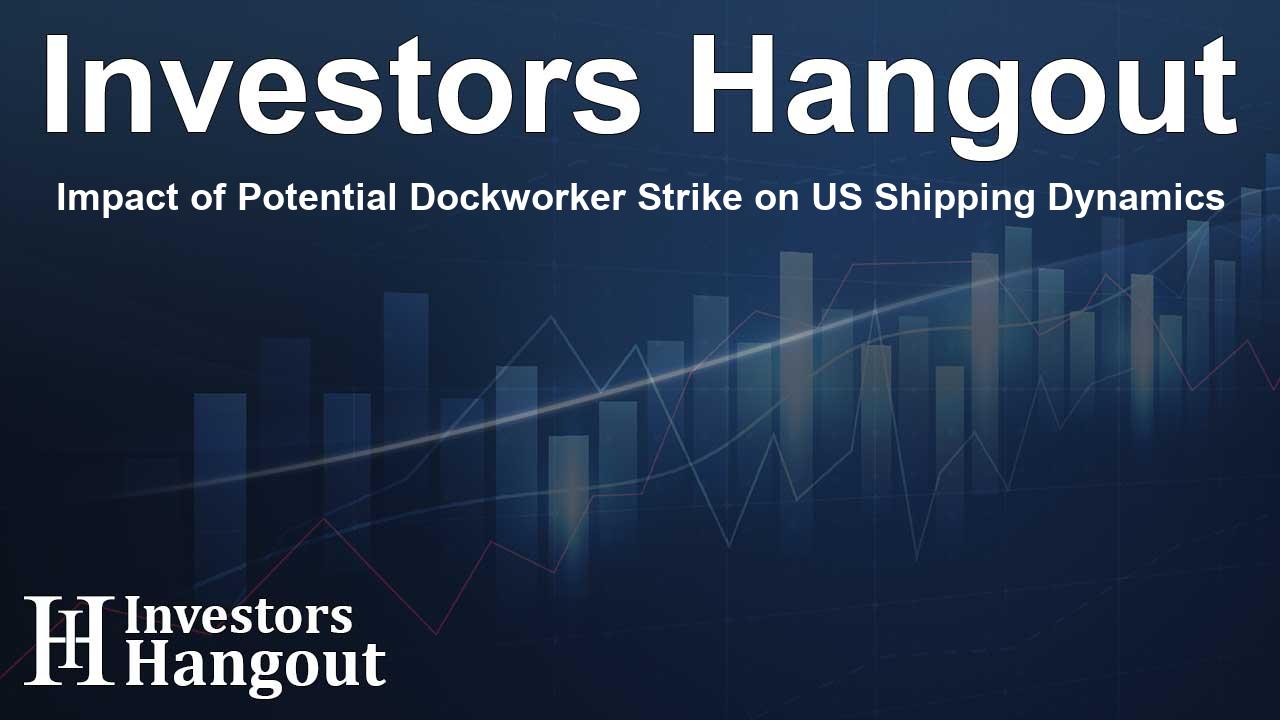Impact of Potential Dockworker Strike on US Shipping Dynamics

Potential Dockworker Strike Threatens Supply Chain
A possible dockworker strike could have immediate and far-reaching effects on the supply chain in the United States. The chief executive of CMA CGM, a prominent French container shipping company, has warned that any work stoppages at ports on the U.S. East Coast and Gulf of Mexico would quickly disrupt the movement of goods.
Overview of the Concern
The International Longshoremen's Association (ILA), representing approximately 45,000 workers across 36 ports—including major hubs like New York/New Jersey, Houston, and Savannah, Georgia—plans to stop work if a new labor agreement is not reached by the expiration of their current contract.
Critical Deadline
The contract is set to expire at midnight on September 30, and consultations between the ILA and employers, including CMA CGM, are underway to avert potential disruptions. CMA CGM's North America chief, George Goldman, highlighted the urgency of the situation during a webcast conducted by the Port of Los Angeles, stating, "The moment you close the door, things begin to back up." He emphasizes that even a single day of port closures would be detrimental.
Widespread Impact on Imports
Ports affected by a strike are responsible for handling nearly half of all U.S. imports. In anticipation of potential disruptions, retailers and manufacturers have begun rerouting cargo to the West Coast, seeking to avoid the risk of goods getting stranded at inactive facilities.
Backlog and Delays
Shipping consultants at Sea-Intelligence have projected that a one-day strike could create a backlog that may require four to six days to rectify. In the worst-case scenario of a two-week strike, experts warn that it could take until 2025 for operations to return to normal.
Risk to Global Supply Chains
Transportation specialists assert that goods coming from Europe, India, and other nations utilizing direct transatlantic routes will face the most severe disruptions. As the situation evolves, imports at the busiest ports on the U.S. West Coast are escalating swiftly, fueled by demand for seasonal merchandise.
Surge in Preemptive Shipments
Companies, including CMA CGM and Maersk, are ramping up shipments of Halloween costumes and holiday apparel to ensure supplies are in place ahead of any labor-related delays. Concurrently, manufacturers are stockpiling solar panels and other goods, anticipating potential tariff hikes.
Record-Setting Activity at West Coast Ports
Recent activity at the Port of Long Beach illustrates this surge, recording the busiest month in its 113-year history, with traffic increasing by approximately 34% compared to the previous year. The neighboring Port of Los Angeles experienced a similar boost, reporting a 16% rise in volume, driven largely by a nearly 18% increase in imports.
Capacity at Port of Los Angeles
Gene Seroka, the executive director of the Port of Los Angeles, pointed out that while the influx of cargo from other ports is challenging to quantify, the port's current capacity stands at about 1.2 million twenty-foot equivalent units (TEUs) per month. This contrasts sharply with the 960,597 TEUs processed in August, indicating that the port is well-equipped to manage incoming shipments.
Looking Ahead
As the threat of a strike looms, businesses and shipping companies continue preparing for potential disruptions. The dynamic nature of international trade and shipping means that flexibility and readiness will be vital in navigating any challenges that arise during this critical time.
Frequently Asked Questions
What are the potential impacts of the dockworker strike?
A dockworker strike could significantly disrupt the flow of goods, potentially leading to backlogs and delays in supply chains across the U.S.
Which ports are likely to be affected by the strike?
The strike is expected to impact major U.S. East Coast and Gulf ports, including New York/New Jersey, Houston, and Savannah.
How are companies responding to the potential strike?
Companies are rerouting shipments to the West Coast and ramping up inventories of seasonal items to mitigate delays.
What are the projected consequences of a prolonged strike?
Experts warn that a two-week strike could leave ports operating at less than full capacity until 2025.
How does the Port of Los Angeles plan to handle increased demand?
The Port of Los Angeles has a capacity of about 1.2 million TEUs per month and is currently preparing to maximize its operations amid increasing cargo volumes.
About The Author
Contact Owen Jenkins privately here. Or send an email with ATTN: Owen Jenkins as the subject to contact@investorshangout.com.
About Investors Hangout
Investors Hangout is a leading online stock forum for financial discussion and learning, offering a wide range of free tools and resources. It draws in traders of all levels, who exchange market knowledge, investigate trading tactics, and keep an eye on industry developments in real time. Featuring financial articles, stock message boards, quotes, charts, company profiles, and live news updates. Through cooperative learning and a wealth of informational resources, it helps users from novices creating their first portfolios to experts honing their techniques. Join Investors Hangout today: https://investorshangout.com/
The content of this article is based on factual, publicly available information and does not represent legal, financial, or investment advice. Investors Hangout does not offer financial advice, and the author is not a licensed financial advisor. Consult a qualified advisor before making any financial or investment decisions based on this article. This article should not be considered advice to purchase, sell, or hold any securities or other investments. If any of the material provided here is inaccurate, please contact us for corrections.
